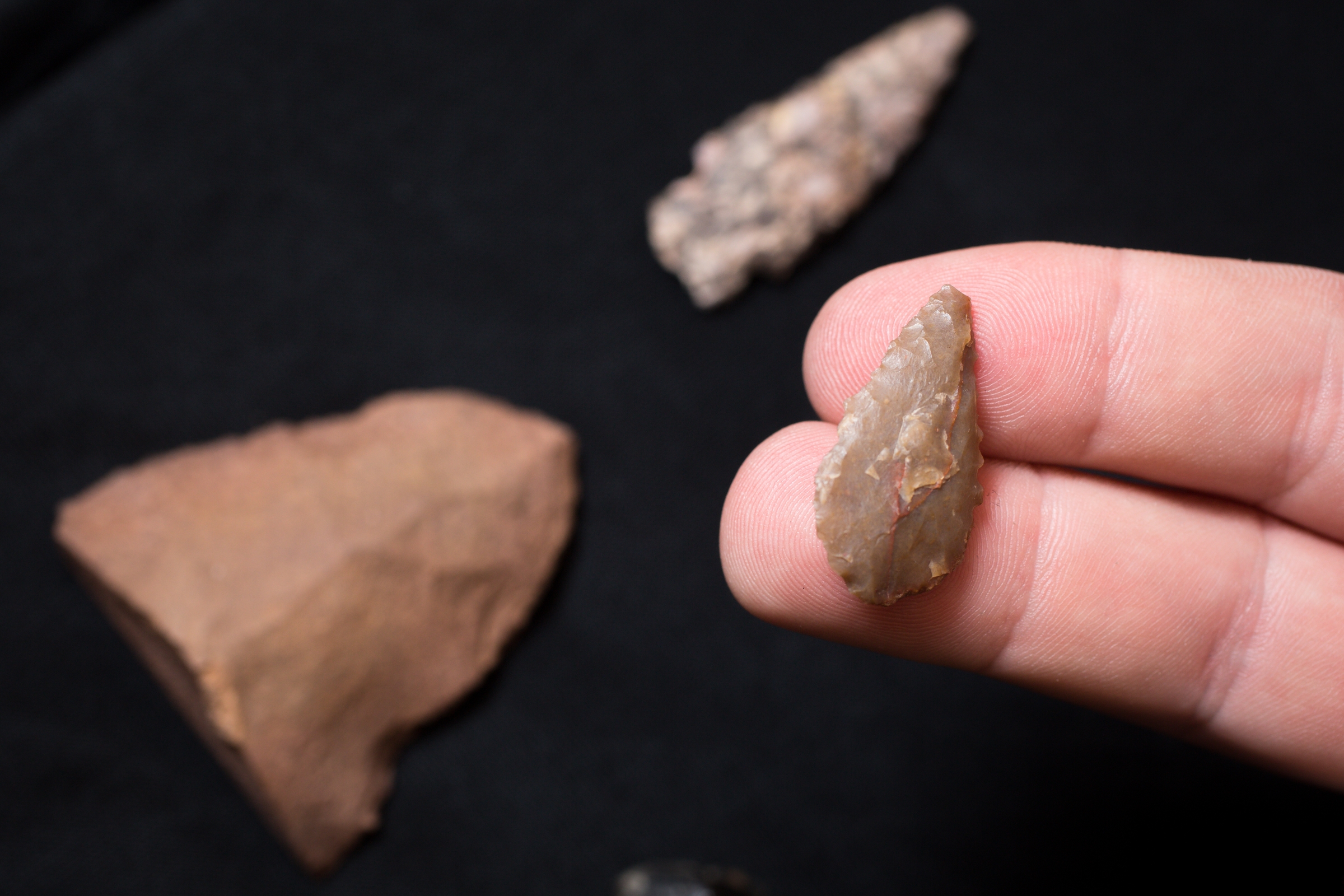Editor's note: This is part of a series of profiles for spring 2016 commencement. See the rest here.
Nathan Shelley likes to imagine the first people who came to the Americas looking at the Grand Canyon.
“Can you imagine that?” said the soon-to-be-minted baccalaureate in archaeology. “All the beautiful things that are in this country, in the Americas, period. I get jealous. I wish I was the first person to see a pristine Tonto National Forest, Yellowstone, all the places I’ve ever been. It’s kind of a driver. I love thinking about it. ... They mastered them all and became the people we have here today. It’s really exciting.”
In somewhat the same fashion, an admittedly lackadaisical student arrived at Arizona State University, mastered the forests of academe, and now leaves with his own mammoth kill: the Cynthia Lakin Award for graduating seniors who have majored in anthropology and made sustained contributions to the field at ASU.
“I’ve never won an academic award in my life,” said Shelley, who is receiving his bachelor of science in anthropology through the School of Human Evolution and Social ChangeThe School of Human Evolution and Social Change is an academic unit of the College of Liberal Arts and Sciences.. “In high school I wasn’t a great student. I told my mom 'D's' are fine. So winning an academic award like that at ASU is pretty cool. I never saw it coming.”
Shelley wants to spend his career studying the early peopling of the Americas.
“I’d like to help answer when they got here, how they got here — dispersal, how they moved about the landscape,” he said. “They came in, and it was a brand-new environment."
The oldest known archaeological site in the Western Hemisphere is Monte Verde in Chile, on the deepest southern tip of Chile, according to Shelley.
“That means there are archaeological sites somewhere in the rest of the Americas,” he said. “They have to be older or the same time frame. It’s really exciting to know that our oldest is the farthest away from where they came from — the Siberian land bridge. There’s a lot of exciting stuff still to be discovered in this field and really understood.”
He sat down with ASU Now at the ASU Center for Archaeology and Society Repository on Alameda Street in Tempe to talk about his time at ASU.
Anthropology senior Nathan Shelley decided to follow his passion for projectile points — arrowheads and other lithic fragments — instead of his previous work in IT. He spends much of his days at the Center for Archaeology and Society Repository studying the relics. This and top photo by Charlie Leight/ASU Now
Question: What was your “aha” moment, when you realized you wanted to study the field you majored in?
Answer: When I was a kid I traveled around a lot to the national parks, and I was always interested in the people who lived there. Then I went to work in IT; I’ve always been really good with computers. I was about five years in when I realized while it was good, I wasn’t happy. I wanted to do what I loved, and I really loved archaeology. So I came back to school and decided to study archaeology.
Q: What’s something you learned while at ASU — in the classroom or otherwise — that surprised you, that changed your perspective?
A: The technology. I worked in a field school at Cooper’s Ferry, Idaho, over the summer. Using total stations (electronic/optical instruments used in modern surveying and building construction) to pinpoint map things, how we gain provenience, how we learn collection methods, learning all the different methods we use in the field, was the biggest surprise. ... I figured (the technology used in archaeology) was farther behind than it is.
Q: Why did you choose ASU?
A: I’ve been in the Valley for 20 years, and it’s become a part of my life. I wanted to start my career here.
Q: What’s the best piece of advice you’d give to those still in school?
A: Get involved and don’t fall through the cracks. Find a way to meet professors and work with them, talk to graduate students, take advantage of everything we have here to get more experience. Don’t fall behind into the shadows. Don’t be afraid to talk to people. Everyone will talk to you and try to help you as much as they can. There’s a lot of good people here, and a lot of extremely smart people here who could really help your career. Get involved.
Q: What was your favorite spot on campus, whether for studying, meeting friends or just thinking about life?
A: Here. [The ASU Center for Archaeology and Society Repository.] Right here. I love this place. I spend a lot of time here. I study here. It’s like a second home.
Q: What are your plans after graduation?
A: I’m going to Eastern New Mexico University to pursue my master’s in archaeology. I’m really excited. If I’d told my teen self I’d be going to grad school, I would have laughed at myself and said, “Yeah, right.”
Q: If someone gave you $40 million to solve one problem on our planet, what would you tackle?
A: Climate change.
More Arts, humanities and education

ASU professor's project helps students learn complex topics
One of Arizona State University’s top professors is using her signature research project to improve how college students learn science, technology, engineering, math and medicine.Micki Chi, who is a…

Award-winning playwright shares her scriptwriting process with ASU students
Actions speak louder than words. That’s why award-winning playwright Y York is workshopping her latest play, "Becoming Awesome," with actors at Arizona State University this week. “I want…

Exceeding great expectations in downtown Mesa
Anyone visiting downtown Mesa over the past couple of years has a lot to rave about: The bevy of restaurants, unique local shops, entertainment venues and inviting spaces that beg for attention from…



